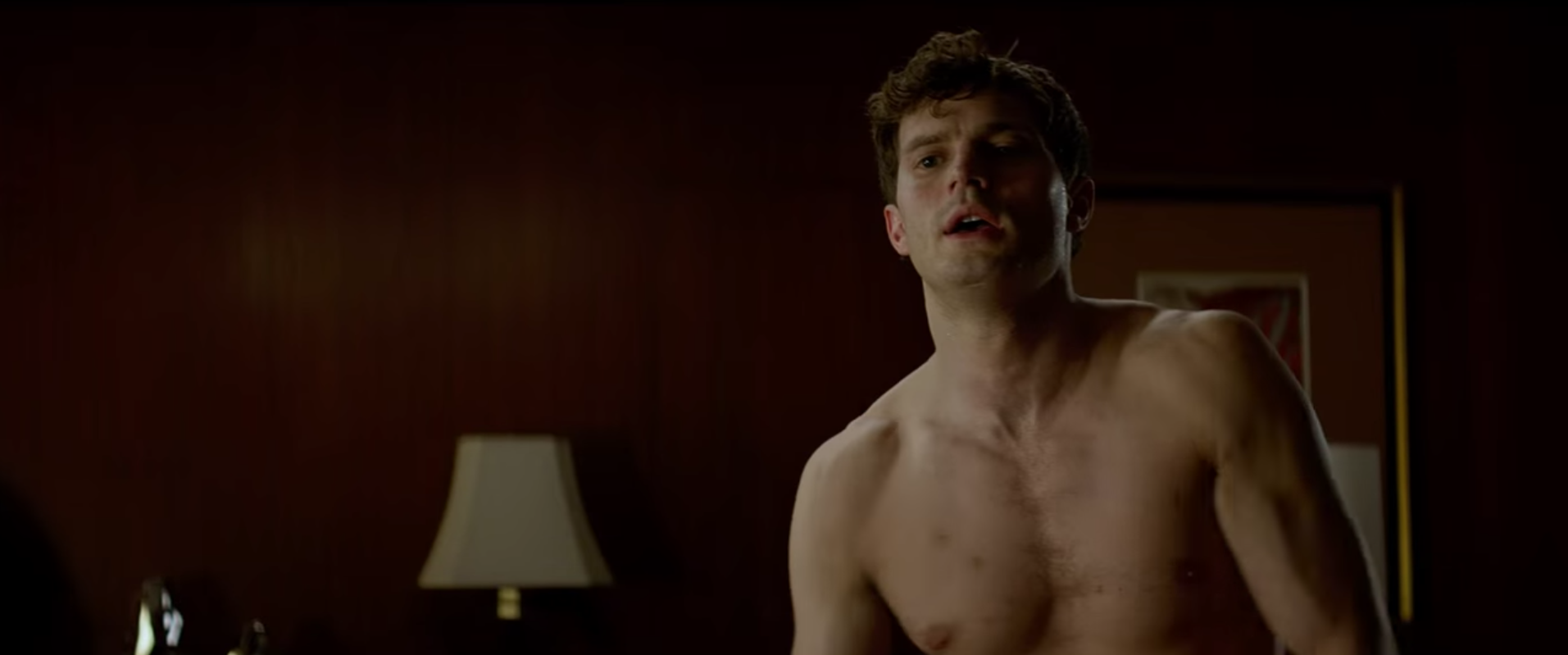After marketing itself with promises of being steamier and more intense than its predecessor, the highly-anticipated sequel Fifty Shades Darker premiered this month. The film grossed $46,607,250 in its first weekend despite racking up pretty awful reviews. Critics complained about insufficient chemistry between the two leads, a lack of emotion in the cast’s performances and, strangely, not enough full-frontal nudity from Jamie Dornan.
Judging from the novels the Fifty Shades film series is based on, the filmmakers had plenty of opportunities to give its audience a glimpse of Dornan’s penis. Instead, Fifty Shades Darker goes back and forth between PG-13-level sex scenes and R-rated BDSM material. The cameras scan Anastasia Steele’s body throughout the movie, and there is aggressive spanking peppered in here and there, but we see Christian Grey having passionate, kinky sex … with his pants on.
Considering how often Dakota Johnson’s character is asked to bare all in these films, one could even go as far as calling the lack of male nudity in the series unfair. In fact, Johnson did — comically pointing out a confusing double standard that exists in our film industry.
Operating on the mass media-made idea that female and male bodies have different degrees of sexiness is unreasonable because sexual attraction is such a natural process.
Nudity in art allows the subjects to appear more vulnerable, and unless it is deemed gratuitous, it adds to character development, especially in film. However, the line between gratuitous and tasteful is much more blurry for women. Male actors are rarely asked to display full-frontal nudity. When they do, it’s usually a delicately placed glimpse (see: Gone Girl or Boogie Nights). While female nudity is expected in most R-rated films, male nudity often serves for comedic effect such as in Forgetting Sarah Marshall or Borat. Male genitals are still seen as more taboo, while female genitals are widely sexualized.
It’s widely known women are much more likely to be sexualized in the media than their male counterparts. The female body has been historically sexualized to sell beer, cigarettes and even fast-food items over the years. Women were nearly three times more likely to appear partially or fully nude in movies, according to an annual Report on the Status of Women and Girls in California from Mount Saint Mary’s University in Los Angeles that studied the 100 top grossing films in 2014.
The Motion Picture Association of America has tackled accusations of sexism and homophobia for widely inconsistent rules on nudity, coming under fire in 2010 after the association added the term “male nudity” to a list of descriptors that warranted an NC-17 or R rating, as this solidified the idea that nude female bodies are simply more acceptable in film.
That is, until they are catering to something other than the sexual interests of straight men, as heteronormative sex scenes are more likely to receive a tamer rating than films with gay content. Jamie Babbit’s 1999 film But I’m a Cheerleader, which features scenes that suggest lesbian sex, was forced to cut a scene that depicts unseen masturbation by a fully-clothed character in order to receive an R-rating instead of an NC-17 rating, a move Babbit criticized in the 2006 documentary This Film Is Not Yet Rated. Babbit suggested the MPAA rating system discriminates against films featuring homosexual sex, citing American Pie, a film literally centered on four boys seeking heterosexual sex, which also premiered in 1999 and received an R-rating despite showing a male character masturbating into a pie.
Female nudity being deemed integral to modern film, while male nudity is used for shock-value, is a symptom of everyday sexism deeply rooted in our culture. As art historian Linda Nochlin explored in her 1971 essay, “Why Have There Been No Great Women Artists?”, the availability of female nude bodies in the arts is no coincidence, but rather a part of a larger, institutionally maintained discrimination against women. Assuming the viewer is coming from a heterosexual male perspective, viewers don’t want to see male genitals because it could make them uncomfortable. Our society sustains this fear by preventing male actors from exposing themselves, while asking women to do just that.
At one point in time, publicly displaying a man’s nipples was seen as overly sexual and a threat to a man’s sexuality. It wasn’t until the late 1940s — after men publicly broke shirtless bans and the amount of shirtless men in Hollywood slightly increased — that a man’s bare-chest became widely accepted.
Getting a chance to see Dornan’s private parts won’t reverse institutional sexism, but it could certainly help normalize male genitals in film. If women’s bodies are needed to advance plots or sell products, isn’t it only fair that men are asked to do the same?



